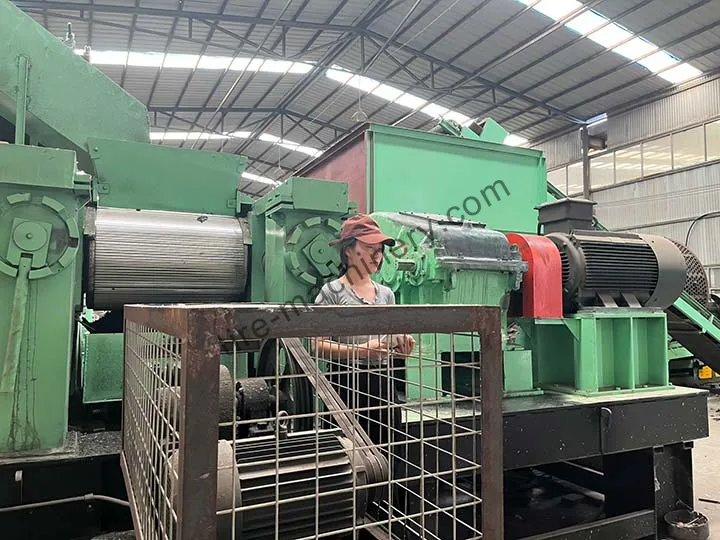Safety First: The Essential Guide to Tire Grinder Maintenance and Operation
This guide provides essential safety and maintenance protocols for tire grinders. It covers a three-phase operational checklist: pre-operation, during operation, and a critical post-operation step to prevent fire hazards. It also includes a detailed daily, weekly, and monthly maintenance schedule focusing on key components like rollers and bearings. The article serves as a practical manual for operators to ensure safety and extend equipment life.

A tire grinder is the powerhouse of any tire recycling facility. Its performance dictates your output, and its condition determines your long-term profitability. Proactive tire grinder maintenance is not merely a recommendation; it is a core business practice that protects your investment, your personnel, and your bottom line.
This guide moves beyond the basic user manual, offering practical tips and a crucial safety insight gained from years of field experience. Following these procedures will help you extend the lifespan of your equipment and ensure a safe working environment.
The Three Phases of Safe Tire Grinder Operation
Effective tire grinder operation can be broken down into three distinct phases. Integrating these steps into your daily routine is the first line of defense against accidents and unplanned downtime.
1. Before Operation: The Pre-Flight Check
Before starting the machine for the day, conduct a quick visual inspection:
- Ensure the area around the machine is clear of debris, tools, and personnel.
- Check for any loose bolts or guards.
- Verify that all safety mechanisms, like emergency stop buttons, are accessible and functional.
2. During Operation: Active Monitoring
While the grinder is running, operators should remain vigilant:
- Listen for unusual noises, such as grinding or rattling, which could indicate a mechanical issue.
- Monitor the machine for signs of tire grinder overheating, a key indicator of potential problems.
3. After Operation: The Most Critical Safety Step
This is a step that is often overlooked but is paramount for tire grinder fire prevention. The friction generated during the grinding process creates significant heat. This heat, combined with fine rubber dust and residual material, creates a serious rubber grinder fire risk.
Crucial Safety Procedure: After shutting down the machine, always thoroughly clean any residual rubber powder and material off the rollers, housing, and surrounding areas. Do not let material accumulate on the hot machine overnight. This simple act of cleaning is the single most effective way to prevent a smoldering fire.
Your Essential Tire Grinder Maintenance Checklist
Regular, scheduled maintenance is the key to longevity. Use this checklist as a starting point for your tire grinder maintenance program.
Daily Maintenance:
- Cleaning: Perform the critical post-operation cleaning described above.
- Visual Inspection: Check for any visible wear and tear on key components.
Weekly Maintenance:
- Check Bolt Torque: Vibrations can loosen bolts over time. Check and tighten critical fasteners.
- Bearing Lubrication: Follow the recommended lubrication schedule for the rubber mill to ensure bearings run smoothly. Proper lubrication prevents overheating and premature failure.
Monthly Maintenance:
- Tire Grinder Roller Maintenance: The rollers are the heart of your machine. Inspect them for any signs of chipping or excessive wear. Minor repairs can often be done without removing the rollers, preventing a small issue from becoming a major problem.
- Inspect Drive System: Check the condition of belts or chains for proper tension and wear.
A well-maintained machine is a reliable machine. This proactive approach ensures your entire complete tire recycling plant runs smoothly and efficiently.
Basic Troubleshooting for Common Problems
Even with perfect maintenance, issues can arise. Here’s how to approach some common problems with tire crushers:
- Overheating: This is often caused by insufficient lubrication or, more commonly, an accumulation of rubber dust preventing proper heat dissipation. Refer to the post-operation cleaning procedure.
- Strange Noises: Rattling can indicate a loose bolt or a foreign object in the grinding chamber. A high-pitched squeal often points to a bearing that needs lubrication. Shut down the machine safely before investigating.
- Decreased Output: If your production rate drops, it is often a sign that the rollers are worn and need maintenance.
Regular inspection of your tire crusher machine is the best way to catch these issues early.
By integrating these safety and maintenance procedures into your daily workflow, you transform your equipment from a simple tool into a long-term, reliable asset.
If you require a more detailed maintenance manual foryour specific model or need assistance with troubleshooting, do not hesitate to reach out.
